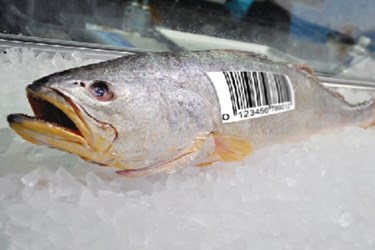Stopping Seafood Fraud Tops President Obama's "To Do" List
By Laurel Maloy, contributing writer, Food Online

The issues of IUU Fishing and Seafood Fraud is now in the hands of the Presidential task force charged with submitting proposed solutions and/or legislation as the public comment period expires
On July 31, the National Oceanic and Atmospheric Administration (NOAA) published a Notice of Public Meetings and Request for Comments concerning the formation of a Presidential Task Force. The task force was called for in a Presidential Memorandum, dated June 17, 2014, bearing the title, “Establishing a Comprehensive Framework to Combat Illegal, Unreported, and Unregulated (IUU) Fishing and Seafood Fraud.” The comment period closed on Sept 4, with the task force having 180 days from the date of the memorandum to report to the President. The task force will be co-chaired by the Departments of State and Commerce, but will be populated by a wide-ranging assortment of experts from other federal agencies.
Guest Column: Food Fraud — It’s More Than Food Defense
The broadest focus of the task force will be on combatting IUU fishing — which undermines the environmental and economic sustainability of fish populations — in the U.S. and around the world. It is estimated the worldwide losses for legitimate fishermen amounts anywhere from $10 billion to $23 billion annually. However, seafood fraud is also thriving and responsible for creating a public health hazard. Its impact should not be minimized.
According to Oceana, Seafood fraud is the practice of misleading customers about seafood in order to increase profits. The most common fraudulent practice is substituting one species of fish for a less expensive species. Recent studies have confirmed mislabeling is a major problem, happening 25 percent to 70 percent of the time, particularly for the most expensive fish species: Red Snapper, Atlantic Cod, Grouper, and Wild Salmon. Tilapia is often sold as Red Snapper, farmed Salmon is sold as Wild Caught and Vietnamese Catfish (basa or tra) is often sold as Grouper. A 2011 Consumer Reports investigation found:
- Only four of the 14 types of fish bought (Chilean sea bass, Coho salmon, Bluefin tuna, and Ahi tuna) were always identified correctly
- 18 percent of samples didn't match the names printed on placards, labels, or menus. Fish were incorrectly identified as catfish, grey sole, grouper, halibut, king salmon, lemon sole, red snapper, sockeye salmon, and yellowfin tuna
- Four percent were incompletely labeled or misidentified by employees
- All 10 of the "lemon soles" and 12 of the 22 "red snappers" purchased weren't the claimed species
- One sample, labeled as grouper, was actually tilefish, which averages three times the mercury as grouper. The FDA advises women of childbearing age and children to avoid tilefish entirely.
With more than 1,700 species of seafood, it is impossible for any company to be absolutely sure that what they are buying is what they are receiving. Consumer Reports utilized DNA testing through an outside laboratory to confirm findings, a time-consuming and cost-prohibitive venture at this point.
More than 80 percent of the seafood consumed in the U.S. is now imported, though only about 2 percent of that amount is actually inspected at our ports. The large percentage of imports is mostly due to a decline in U.S. fisheries and the necessary regulation of the fishing industry. Overfishing and species decline has led to a 27 percent increase in the number of imports, but has also led to a myriad of opportunities for profitable deception.
Of equal weight is the potential for foodborne illnesses as the complex path from the ocean to the plate is, as of now, impossible to trace. The biggest concern is the ingestion of heavy metals, such as methylmercury, a real possibility when one type of fish is substituted for another. Mercury poisoning can result in damage to the brain, heart, kidneys, lungs, and the immune system. In young children and unborn infants, it can irreparably damage the central nervous system. The Natural Resources defense Council (NRDC) publishes a guide, ranking fish according to the amount of mercury it contains. All fish have some level of mercury, but those with the higher levels should be avoided.
Food Traceability: Solving The Imperative Of Compliance
Fish farming is highly regulated in the U.S., though not so in other parts of the world. For example, according to Linda O’Derno, Outreach Specialist for the National Aquaculture Association (NAA), hormones and antibiotics are prohibited in U.S. fish farming. Other countries do not prohibit this practice.
In response to the public comment period, Johns Hopkins Center for a Livable Future and 12 other organizations banded together to call for robust traceability requirements. Just a few of the heavy hitters are: the Center for Food Safety and Applied Nutrition (CFSAN), the Center for Science in the Public Interest (CSPI), the American Public Health Association (APHA), and the Consumer Federation of America (CFA). The FDA has implemented an Imported Seafood Safety Program and FSMA calls for import certification requirements and third-party auditors. However, in the highly-charged political atmosphere of trade, will the world’s concerns negatively impact the need for a way to verify the sources and safety of our nation’s seafood?
